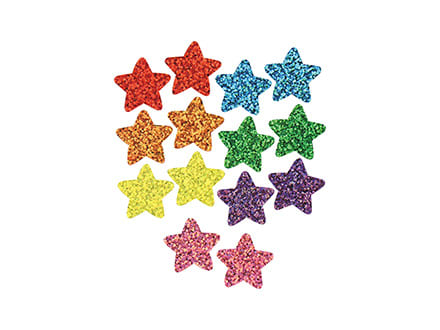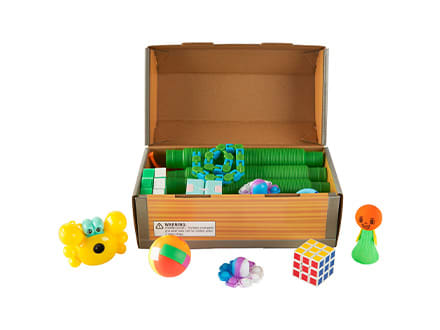The Classroom Reward System: A Guide for Teachers
June 1, 2023
A well-designed classroom reward system encourages positive behavior, reinforces classroom norms, and may improve results. This article covers using class rewards to improve engagement and behavior and have a little fun.
How To Make a Classroom Reward System
Students like rewards. Young children will gladly earn vouchers they can trade for prizes. High school teachers note with surprise that even teenagers save sparkly stickers. Even college football coaches give helmet stickers to players for making a good play.
Recognizing performance can work. Here are some guidelines to consider when creating a successful classroom reward system.
Step 1: Clearly Define What Students Can Do To Earn Rewards
For a successful rewards program, all students must clearly understand the behavior that earns awards. Consider focusing on three to four specific types of behavior.
Well-defined behavior is observable, specific, and clear. For example, you can avoid using broad terms like “be polite.” Instead, say, “Put your hand up when you have a question and wait for others to finish speaking.”
Use your rewards to recognize positive behavior rather than penalize poor behavior. Make sure behavior requirements factor the children’s age and level of development. For example, small children may be unable to sit still for long periods.
Set attainable goals. If the target seems impossible, students will give up before they start. Also, give the reward as soon as possible after witnessing the positive behavior. If you wait too long, younger children may forget why they’re being rewarded.
Be sure to base individual rewards on actions that students can control. For example, a student could lose points because a parent failed to sign a daily folder. That failure might be due to work schedules or other issues with the parent that aren’t the student’s fault.
Inform parents about the rewards program so they can celebrate their child’s success. You can also ask if parents can donate prizes for students to earn.
Provide a way for students to monitor their progress toward a goal. You can track results on a whiteboard or keep reward coupons where they can count them.
Step 2: Create a Token or Point System for Students
After settling on which behaviors earn awards, decide what students earn and how to redeem their awards. Here are a few options to consider:
- Reward coupons. Consider making coupons printed on color paper that show a special perk, such as extra recess, a teacher’s helper, or sitting with a friend. Display them on the bulletin board along with posters listing the desired behaviors. When a student completes a task, they can choose a coupon. To make your coupons durable enough to last all year, you can laminate them.
- Pretend cash. Create your own currency that students can earn and name it if you’re feeling clever. For example, you could make “Bronco Bucks” if your school mascot is a bronco horse. Students earn $1 for things like turning in homework on time. They can use the cash to buy a small treat like cookies or candy or save for a bigger reward. Some teachers create “stores” for their classroom rewards with prizes of different values. These include games, small toys, and bigger incentives donated by parents.
- A point system. Some teachers use a point system, keeping a running tally of points that students earned. Students can check their totals on a whiteboard to see when they’ve earned enough points for a desired prize.
Step 3: Incentivize Earning and Saving Points
Teachers can use incentive programs to encourage and reward good behavior. Students adjust their behavior to earn privileges. For example, motivated by a chance to be a teacher’s helper or choose a game in gym class, a child may take care to complete every homework assignment for a week.
Over time, students grow accustomed to earning and banking points. For instance, a first-grade teacher might pay students a salary linked to the points earned that week. Most students may spend their pay on small rewards like stickers, but some choose to save their salaries for larger items.
With group coupons, the entire class earns points that lead to a shared treat like a pizza party. Students earn group rewards by completing a goal requiring group effort, such as keeping the classroom orderly. They also earn points for things like walking quietly in a hallway or earning a compliment from another teacher.
To build enthusiasm for a group challenge, have students choose the reward they’ll win. Examples of whole-class rewards include extra recess time or a day of wearing pajamas to class. Record progress toward a class goal on a bulletin board or whiteboard where everyone can see it.
Step 4: Determine If Disciplinary Action Costs Points
In some classrooms, the incentive system is based on rewards and consequences. Students earn perks with good behavior and lose points for misbehaving. Clearly explain the actions that lead to a point loss, such as fighting and rudeness. Remind them that having points taken away can slow their progress toward a reward.
Step 5: Offer Rewards That Students Can Strive For
To make sure you have rewards that motivate your students, include enough variety to appeal to different interests. Provide options that are age-appropriate and ask students to help you choose their favorites.
Some rewards are material such as candy, toys, or art supplies. Others give privileges like extra computer time or a pass for a homework assignment.
What To Offer as Rewards for Students
Here are some rewards ideas for individuals or groups. Important: You can check with parents to make sure there aren’t students with food allergies before offering food and candy as a reward.
Reward ideas for elementary students:
- Fun erasers
- Stickers
- Crayola crayons and markers in unique colors
- Candy and snacks
- Be first in the lunch line
- Small toys
- Take extra computer time
- Use the teacher’s chair
- Lead a class activity
Reward ideas for middle and high school students:
- Homework pass
- Music/computer time
- Cafeteria snack coupons
- Water bottle stickers
Group rewards for a classroom:
- Pizza party
- Extra recess time
- Popcorn and a movie
- 15 minutes of “free time”
- Crazy Hat Day
- Class kickball game
- Educational games
- Class outside
- Field trip
Why Use a Reward System In Your Classroom?
You may find plenty of advantages to using a reward system in your classroom. Here are some ways it may benefit your students.
- Increased motivation. For some students, a reward like a cool dinosaur eraser is far more reason to study spelling words than the idea of a perfect quiz.
- Better behavior. Rewarding good behavior may improve student conduct and reinforce class norms.
- Higher self-esteem. Having small wins each day or each week can help students feel more confident. That sense of pride may encourage them to strive for more success.
- Completed homework. Rewards systems can help motivate students to complete homework. This improves their grasp of the subject material.
- Improved results. Increased interest and participation and consistent homework completion can lead to improved results. Reward programs may also decrease misbehavior that can distract from learning.
- Related lessons. For younger students, a classroom reward program might be their first chance to earn “money” and shop for themselves. When there’s a chance to attain big awards, students learn to delay gratification and save toward a longer-term goal. They also learn to support a group goal when working with peers toward a classroom reward.
Get the Classroom Supplies You Need for Success
These guidelines can help motivate your students to participate, behave well, and perform better. Students who work hard to gain a gift may discover the intrinsic joy of learning. Stock up on classroom rewards and implement a reward system that works for your students. It can help them succeed, gain confidence, and learn to support group goals.
About the Author
Lauren Jiles-Johnson is a tutor, mentor, and board president of Waukegan to College, a college-readiness organization in Waukegan, Illinois. Waukegan to College helps fifth- to 12th-grade students achieve their dream of being the first in their families to attend college.
All content provided herein is for educational purposes only. It is provided “as is,” and neither the author nor Office Depot warrants the accuracy of the information provided, nor do they assume any responsibility for errors, omissions, or contrary interpretation of the subject matter herein.
))
))









